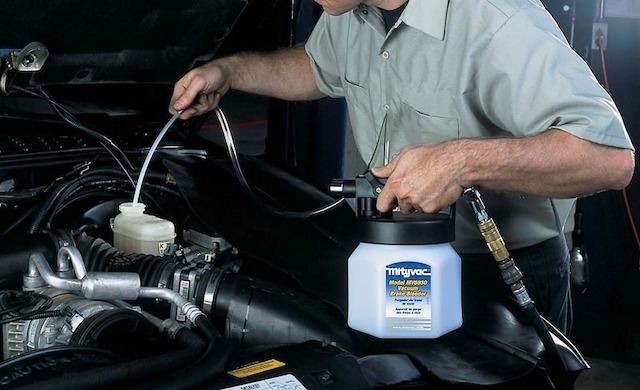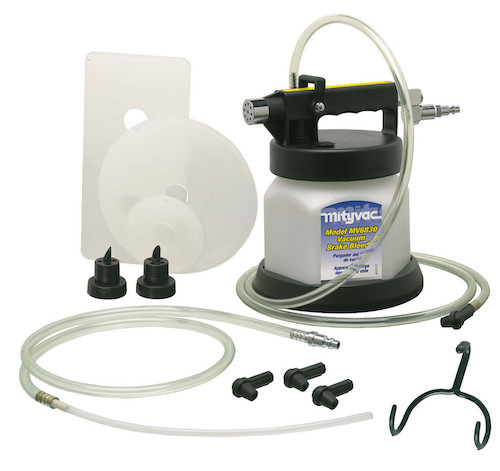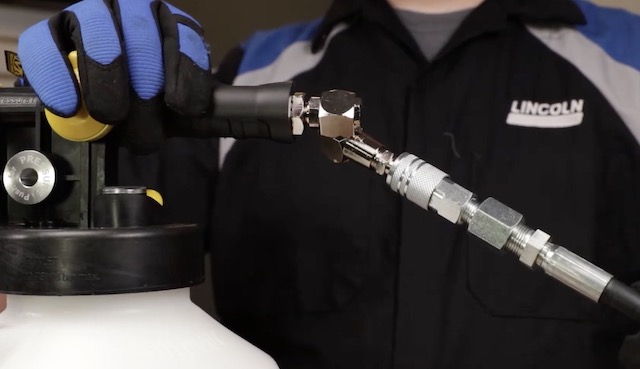How To Bleed A Clutch Using A Pressure Bleeder
Jul 12th 2023
Bleeding the clutch in your car means getting rid of unwanted air that's stuck in the clutch's hydraulic system. When air gets trapped in the hydraulic system, it keeps the clutch from working properly. The clutch might not fully let go, and the pedal could feel squishy. This can cause damage to your car and lead to costly repairs.
By bleeding the clutch, you can make sure it's working as it should, saving you money and keeping your car running smoothly. If you have air stuck in the clutch system of your vehicle, you might notice:
- The clutch pedal travels a different distance than usual.
- The clutch doesn't fully 'let go' or disengage.
- The clutch pedal feels squishy or soft.
If air is in the system, the hydraulic fluid might not work properly, making the clutch unable to disengage fully. This can lead to two costly problems:
- Friction Material Wear: The friction material of the clutch repeatedly rubs against the flywheel when you are stopped, causing it to wear out faster. This could mean you need a new clutch sooner than expected.
- Damage to the Transmission: Because the clutch isn't fully letting go, some power is transferred into the transmission during shifts. This can wear out synchros, gears, or other parts of the transmission.
These issues can lead to costly repairs. That's why it's crucial to bleed your clutch as soon as you realize that there's air stuck in the system. As with most things in life, using the right tools makes all the difference in the world. (Check out another cool tool we recommend - the RoadWatch system - here.)
Bleeding the Clutch: What And How

Bleeding the clutch is exactly what it sounds like. It means removing the unwanted air in the clutch's hydraulic system. You can do this in three different ways:
- The Manual Process: In this method, one person pushes the clutch pedal while another person opens and closes the clutch bleed valve to drain the system.
- The Pressure Process: For this method, a pressure bleeder is attached to the clutch master cylinder, putting pressure on the system. This pressure then pushes hydraulic fluid into the cylinder while someone opens and closes the bleed valve at the same time.
- The Vacuum Process: This means that a person would attach a vacuum bleeder to the bleeder valve and pull fluid from the clutch master cylinder with the suction power. It draws both fluid and air into a separate container.
Bleeding a clutch is straightforward and is something you can do at home. You can find pressure and vacuum bleeder kits from Part Deal here. In the tutorial below we'll guide you through how to do it with a pressure bleeder kit. The big advantage of a pressure bleeder kit is that one person can do the job without help.
What You'll Need

While you can manually bleed your clutch, we recommend a pressure bleed system if you want the best results. These kits come complete with pressure gauges and multiple adaptors. Here are the tools you'll need:
- A pressure bleeder system
- A jack and jack stands
- A wrench that fits the bleed valve
If you often work on your car, you'll find a pressure bleed system is well worth the spend. Remember, you can also use it to bleed the brakes.
Bleed Your Clutch - Step By Step

Here's how you bleed your clutch:
- Lift the front of your car using a jack and open the hood.
- Take the cap off the clutch fluid reservoir - ensure that it is filled to the full line.
- Attach the pressure bleeder onto the top of the reservoir.
- Pump the clutch a few times.
- On the power bleeder gauge, watch the gauge and pump it until it reads around 12 PSI.
- Grab your flexible tubing, empty reservoir, and wrench, and go under the vehicle.
- Locate the clutch slave cylinder and find the bleed valve. If it's corroded, spray some penetrating oil on it. Use enough oil to be sure you can turn the bleed valve.
- Place the hose over the bleed valve and have your reservoir close by and ready - it's time to start collecting fluid.
- Open the bleeder valve (about a quarter of a turn) and keep a secure hold on the hose. You'll see fluid and air bubbles move through the tubing.
- Watch the flow closely and wait for the air bubbles to stop. When they stop, tighten the valve and remove the hose.
- You probably only lost a small amount of fluid, but you should still top off the clutch fluid reservoir - all the way to the full mark.
- Give your clutch pedal a test. It should feel tighter and more responsive. It should also be easier to engage. If the squishy pedal feel comes back quickly, you might need a new clutch master cylinder or slave cylinder.
Bleeding the brakes is just as easy - especially when you have a pressure or vacuum bleeder kit. If you have any questions about bleeder kits or pressure bleeder systems, give us a call at (503) 802-1370. PartDeal has been in business since 1949, and we specialize in stocking and sourcing hard-to-find items. We supply owners, OEMs, fleets, resellers, installers, and dealerships with the parts and tools they need.
In-stock items are shipped the same or the next business day, and our team has extensive knowledge in the parts industry. Feel free to contact us online with any questions - we're always ready to talk about brakes and clutches.

